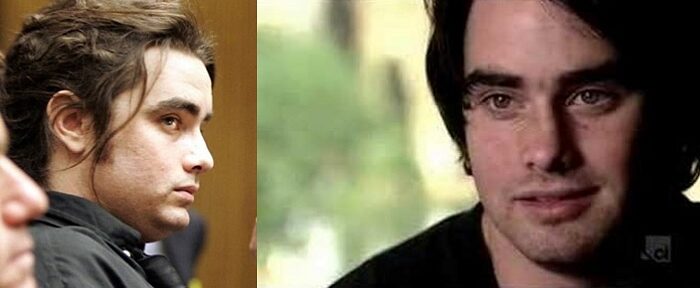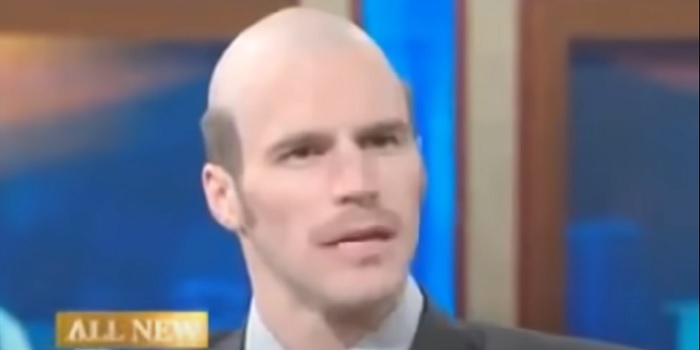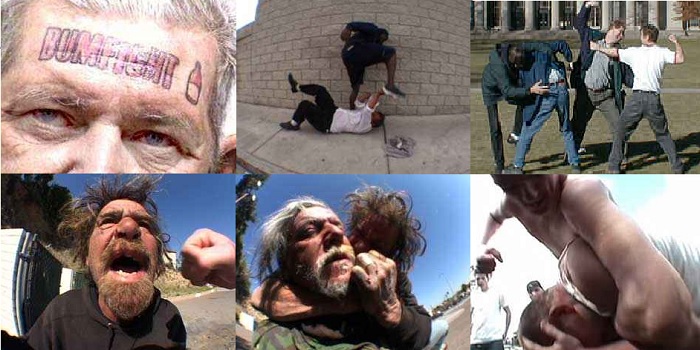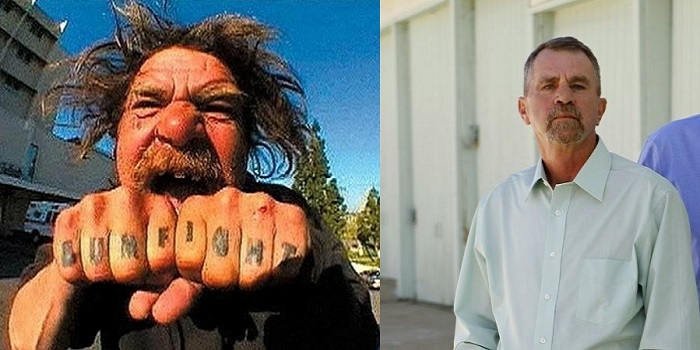When the first film in the Bumfights series was released in 2002, it sent shockwaves across the United States, resulting in a criminal lawsuit and widespread contempt that has followed its creators over the years. The premise of the series produced by Indecline Films, albeit despicable, highlights the plight of homeless people in America, alongside the challenges military veterans face as they transition back into civilian life without the support and resources they need to cope with their new reality.
Bumfights Vol. 1: A Cause for Concern was the first film in the Bumfights series. It follows a film crew of teenagers as they capture homeless people who endanger their lives in various ways, from drug and alcohol abuse to brawling and all sorts of extreme stunts. Three more installments — Bumfights Vol. 2: Bumlife, Bumfights Vol. 3: The Felony Footage, and Bumfights Vol. 4: Return of Ruckus were released in 2003, 2004, and 2006 respectively. The Bumfights sequels weren’t released by the original creators, but they fanned the outrage over the controversial depiction of street life.
Who Are The Original Bumfight Creators?

The origin of Bumfights has been traced to the late 90s to Ryen McPherson, Zach Bubeck, Danny Tanner, and Mikey Slyman. It all began with McPherson, a then-teenager from La Mesa in San Diego, California. McPherson wanted to become a filmmaker and was always seen around town filming whatever he fancied, especially skateboarding stunts. He later met two homeless military veterans, Donnie Brennan and Rufus Hannah, who became the primary subjects for his video camera.
Living on the streets of La Mesa, Brennan and Hannah both served in the Vietnam War and were fond of performing crazy stunts. With McPherson’s encouragement, they performed more stunts he filmed and circulated around. The video clips eventually got to Zach Bubeck, who had seen similar clips from Danny Tanner in Las Vegas. He reached out to Tanner and Mikey Slyman, another aspiring filmmaker. They then founded Indecline, the production company that produced the Bumfights films.
Ty Beeson and Ray Leticia Takeover

After releasing the first film, the original creators sold the venture to Las Vegas producers Ty Beeson and Ray Leticia for $1.5 million. Beeson and Leticia promoted and released the subsequent Bumfights films. The new owners adopted fictitious names for the business due to the backlash the first film drew. RollingStone reported that they had the original creators sign a non-disclosure agreement, which prohibited them from revealing the true identities of Beeson and Leticia. After the acquisition, Leticia and Beeson began claiming they were the brains behind Bumfights while justifying the shocking content of the films.
A case in point was in December 2012 when Ty Beeson was invited for an interview on Phil McGraw’s Dr. Phil. He appeared on the talk show dressed like the host who condemned the Bumfights videos for exploiting the disadvantaged. Beeson likened what Bumfights does to Dr. Phil’s show, asserting that the talk show host is a hypocrite if he fails to see the similarities. Dr. Phil, he said, was also exploiting people facing various life challenges for entertainment on his show. McPherson and Slyman later disclosed that the man on the show wasn’t Ty Beeson but someone the new owners sent to impersonate the real Beeson.
Ethical Issues And Societal Impact Of Bumfights

The controversy surrounding the Bumfights film series revolves around the ethical and societal issues it raises. Paying homeless people small sums of money to engage in degrading, harmful acts for amusement is cruel and unsettling. Nevertheless, the original creators have insisted that people condemning the series missed the point and purpose of Bumfights, which was to raise awareness about homelessness in the United States. “Everybody was offended…but what we did was show them what they walk past every day,” Slyman told RollingStone. But then, Brennan and Hannah, alongside Peter LaForte, claimed they were coerced or manipulated to partake in the videotaped fights and dangerous stunts.
LaForte, for instance, claimed he was approached to participate in a videotaped fight by a 275-pound woman. He declined the offer, but the woman pounced on him while the Bumfights crew filmed the incident. Other difficult-to-stomach scenes of Bumfights include a homeless man ripping off his tooth with pliers and another with “Bumfights” tattooed on his forehead. More such scenes were compiled for the first Bumfights film, which retailed around $22 per copy, with thousands of copies sold within months of its release. This raised concerns about the commodification and demand for violence, which might inspire the abuse and exploitation of vulnerable groups.
Aftermath Of Bumfights: What Became Of The Creators?

Stressing the need to protect those at the receiving end of the social ill, Allen Lichtenstein of the American Civil Liberties Union of Nevada told the Las Vegas Review-Journal that “it’s a fairly sad state of affairs when someone is exploiting people who are broke and desperate for money to engage in fights for other people’s amusements.” Several critics echoed Lichtenstein’s sentiments, leading to a lawsuit against the original Bumfights creators. Citing physical and emotional damages, LaForte, Hannah, and Brennan filed a criminal case against the creators and received around $300,000 in settlement. The Indecline founders settled for a deal that saw them evade a criminal trial.
However, they were sentenced to three years of probation and 280 hours of community service. McPherson and Bubeck were later sentenced to 180 days in prison for violating their probation. Although the original creators relinquished rights to their Bumfights videos to Ty Beeson and Ray Leticia, they kept running their production company, Indecline. The company rebranded as an activist collective comprised of filmmakers, graffiti writers, and photographers. As culled from the company’s website, its activities now revolve around fighting “social, ecological and economic injustices carried out by American and International government, corporations and law enforcement agencies.” The true identities of Beeson and Leticia remain unknown.
 Follow Us
Follow Us





